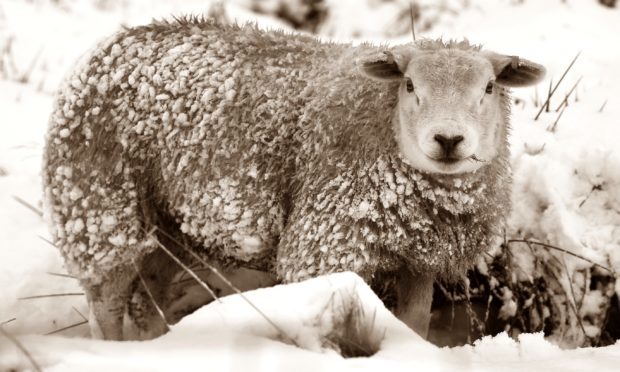Forget the Beast from the East, the Thirteen Drifty Days was a grown-up storm in 1674 that devastated much of Scotland.
The weather was so ferocious that sheep turned violent. Five days into the storm they began to turn on each other, ripping at each other’s wool with their teeth to try to keep warm. Shepherds gasped in horror as the brutes set off on barbarous rampages.
Scotland had known nothing like it and when the storm eventually died down in early March, 90% of livestock in some areas was dead.
In early January a severe frost set in and lasted for weeks. The ground was rock hard so when snow arrived on February 20 it lay. It snowed for 13 days and nights and was named the Thirteen Drifty Days.
Animals began to perish on February 26 and shepherds made semi-circles of dead sheep to try to afford protection to the living.
According to our archives, 1594 was another cold year. On March 10 there began “ane horrible tempest of snow whilk lay upon the ground till April 14”.
In February 1615 ice on the Tay at Dundee was strong enough to support sturdy men and heavy horses. At the North Inch, Perth, two puncheons of wine of “three score twelve stane wecht” were carried by porters over the Tay.
The following month a snow storm cut off all communication around Scotland and killed most livestock in the kingdom. Eating lamb was banned for a period. The Tay froze over again in January 1624 and at least 11 wine carts of emergency aid were hauled up the ice to relieve Perth’s citizens who had suffered four days of enforced temperance.
Ten years later snow began to fall on December 9 and lay until March 9, during which “many bestial both wild and tame died”.
The harsh winter of 1698 claimed many lives among Dundee’s poor. During an “unkindly cold and winter-like spring” meal prices shot up, people starved to death and the impoverished “got neither coffin nor winding sheet”.
In 1785 the Clyde at Glasgow was frozen over for four months, during which time booths and dram shops, complete with fires, sprang up.










